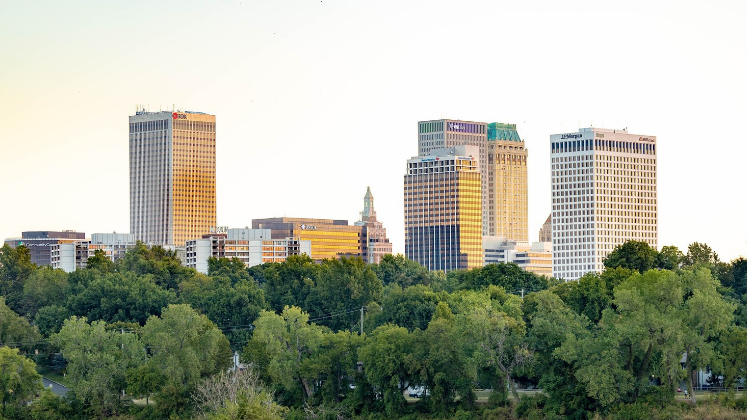In Cities in the Anthropocene: New Ecology and Urban Politics, Ihnji Jon explores how researchers, city planners and the public can develop a bottom-up approach to environmentalism in urban areas, focusing on the cities of Cape Town, Cleveland, Darwin and Tulsa. This book contributes to establishing a new approach to urban research that understands cities as complex environments and stresses the importance of collaboration with communities, finds Bouchra Tafrata.
Cities in the Anthropocene: New Ecology and Urban Politics. Ihnji Jon. Pluto Press. 2021.
 Find this book (affiliate link):
Find this book (affiliate link): ![]()
In her article ‘The City We Want: Against the Banality of Urban Planning Research’, Ihnji Jon reflects on the current state of academia and how a space of intellectual exercise is being threatened by marketisation, the fear of remaining invisible without publications, h-indexes and an obsession with producing ‘objective’ knowledge. As a young scholar trying to carve a pathway in urban studies, I ruminate on how the current knowledge produced within universities is affecting approached communities. Whose voices are we listening to? Why are institutions and academics trying to maintain the barrier they have constructed between research and activism? If cities are complex, why is academia generating ‘banal’ research? In this regard, Jon evokes Robert W. Lake’s words, calling for a shift ‘from a stance of distanced objectivity to an engaged attitude of solidarity and empathy’ (72).
The current climate situation and the continuous debate between governments and policymakers about the deteriorating state of the planet, in addition to the differences in public opinion, push us to question governments’ approaches to climate issues and to ask why many have failed at implementing climate-related policies. Jon’s book Cities in the Anthropocene is a call for researchers, city planners and the public to reflect on the benefits of a bottom-up approach in environmentalism and to incentivise the public to evaluate its local position within an interdependent global system.
Jon’s scholarship focuses on analysing a ‘new ecology’ that advocates for anti-essentialist environmentalism theory and speaks against political discourse that commands the public to foster a coercive relationship between humans and nature. In her words, ‘‘‘new ecology’’ tried to go beyond the kinds of environmentalism that rely on the fetishised understanding of ‘‘nature’’ or ‘‘the environment’’ that unnecessarily creates the boundaries between our everyday living (human needs) and ecosystem functions (ecological needs)’ (3).

Image Credit: Photo by Lucas Alexander on Unsplash
The book starts by addressing the politics of scale and how cities can act as frontiers for climate change mitigation. The notion of ‘scale’ remains contested, especially in environmental governance. The interconnected planetary ecosystem continues to shed light on the limits of tackling climate issues on a national scale, as these issues expand beyond political delimitations.
In addition, turning environmental issues into ‘leftist debates’ impedes climate change mitigation and conceals the sources of these issues. The ideological turn of the climate debate must be dismantled, as it is a global issue that incessantly deteriorates our daily lives that rely on the state of the environment. As Jon articulates, ‘proposing a positive reconfiguration of scale is needed more than ever, especially for the environmental issues that are intrinsically both local and global’ (32).
Jon illustrates the implications of embedding nature and climate change mitigation in planning without making it a case of leftist political engagement through two cities: Darwin, Australia, and Tulsa, USA. The urban policies and strategies deployed in these cities are intended to attract different communities whose political positions do not align. This is a phenomenon that Jon refers to as ‘pragmatic environmentalism’ (34).
Climate-related disasters, notably hazardous weather, have been affecting urban citizens’ lives in Tulsa. The city’s history of flooding has contributed to centring nature in design, which has led to the creation of ‘pragmatic environmentalism’ strategies: for instance, stormwater management systems as well as embedding greenery, walkability and the ‘Instagram-able’ in urban space to attract Millenials, professionals and families.
In the case of Darwin, its tropical climate and weather hazards have encouraged the implementation of different projects that foster what the author refers to as ‘secularising nature’ (38). This pragmatic approach to nature strengthens proximity between urban citizens and the weather hazards that affect their cities. It asks us to reflect on how we can implement pro-nature practices without idealising ‘nature’.
Through contrasting Bruno Latour’s attention to ‘negative feelings that are generated by the individuals’ (40) with Spinozian ethics on how doing good makes us feel good (41), Jon highlights the importance of practices that foster care, instead of feelings of obligation and authority. In fact, pro-environment city-scale projects – such as embedding greenery in the streets, minimising parking areas, low-impact development (LID) initiatives (namely on-site stormwater treatment centres), green energy transition and establishing attractive amenities in different neighbourhoods – can shift the narrative on climate issues. They also invite different communities to participate in the pro-nature ethos, as our quality of life relies on the state of the ecosystem. Jon linked these initiatives to Deweyan philosophy which shows how valuing the public’s experiences can serve to build bridges with the ordinary, instead of only relying on theories and ideologies (71). This approach centres the everyday experiences of people and establishes engagement with different communities.
Another timely topic the author tackles is how we can address climate change, environmental sustainability and urban inequalities through the same prism, without marginalising communities who endure socio-spatial disparities. Jon studies this issue in two different cities: Cleveland, USA, and Cape Town, South Africa. These two cities endure poverty and socio-spatial segregation. Cleveland is one of the rust belt cities that bore the aftermaths of the 2008 financial crash and industrial decline, which engendered housing inequalities and socio-economic instability (77, 86). Cape Town’s apartheid history and policies created a spatial divide between white settlers and non-white citizens and pushed the latter to dwell in informal settlements, without access to clean water, sanitation, energy or socio-economic opportunities (94, 97,102).
Jon highlights the role of environmental justice theory, which studies how a green policy agenda can reinforce socio-economic inequalities (81). Environmentalist institutions and climate change social movements, particularly in the West, demonstrate how whiteness continues to dominate these spaces and how environmentalists and activists should question whose climate justice they are advocating for. Socio-economic precarity and urban segregation are colonial and the history of white supremacy is still visible in post-colonies. Recognising this offers a chance to re-imagine inclusive and equitable development policies.
The last chapter of the book explores how social complexity theory can inspire environmental action. Referring to the work of Manuel DeLanda on the materiality of cities and connecting this to Deleuzian assemblage theory, Jon explains the role of interaction between different individuals, how this generates a group identity and how this affects the members of the group. In Jon’s words: ‘placing interaction effects at the heart of understanding social entities may relieve us from the ontological contradiction between “having a group identity (which is the soul of the whole)” versus “respecting/acknowledging individual agency and heterogeneity”’ (114). Additional elements vital to recognising the complexity of social entities are understanding the history of the interactions that have occurred between individuals and establishing practices that accommodate heterogeneity (116, 117, 119). Planning with/within complexity can push decision-makers to consider the varieties of social entities and to practise inclusion.
Jon asks how cities can ‘inject their pro-environmentalist ideas via an abstract machine, using the powers of imagination, narratives, expressions, or poetic devices that can inspire people rather than forcing them to pursue environmentalism’ (135). Jon draws on various examples that illustrate how creative projects are working to shift dominant narratives, including the New York Times’s ‘Modern Love’ series that depicts the multiple forms of ‘love’. Through these, Jon calls for a shift in planning and narrative in urban studies (143) through the embrace of the ‘habit of tolerance’ (158) and the complexity of narratives in cities.
While I continue to reflect on practices of inclusion and exclusion inside and outside of institutional walls, Jon’s book helps in setting the mood for establishing a new approach to urban research. It connects the philosophy of pragmatism, climate change mitigation and city planning. It defines cities as complex environments where inequalities are reinforced through systemic marginalisation, and where local/global governments can advocate for pro-environmentalism through a bottom-up approach. It encourages us, researchers and practitioners, to examine the utility of theories produced in the academy, collaborate with communities and be attentive to their narratives and needs.
- This review first appeared at LSE Review of Books.
Please read our comments policy before commenting.
Note: This article gives the views of the author, and not the position of USAPP – American Politics and Policy, nor of the London School of Economics.
Shortened URL for this post: https://bit.ly/3zCbAaR
About the reviewer
Bouchra Tafrata
Bouchra Tafrata is a researcher and host of In Praise of the Margin Podcast. She completed a Master’s in Public Policy at the Willy Brandt School at the University of Erfurt. Her research dissects international political economy, socio-spatial inequalities and urban governance.



